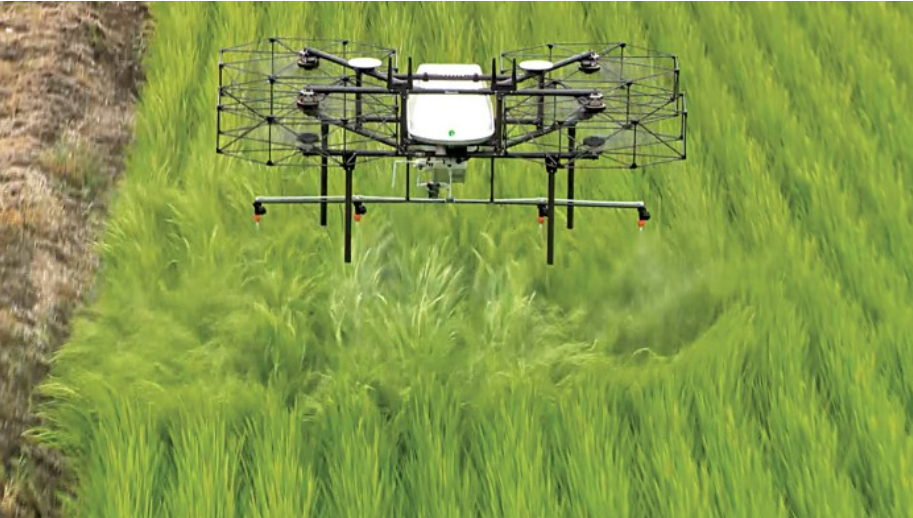Introduction
Agriculture has come a long way from traditional farming methods. Today, technology plays a pivotal role in the industry’s growth and sustainability. One of the most exciting technological advancements in agriculture is the use of drones and Unmanned Aerial Vehicles (UAVs). These flying machines are no longer just a novelty; they have become essential tools for modern farmers. In this blog post, we will delve into the latest innovations in agricultural drones and UAVs that are transforming the way we cultivate crops and manage farms.
Innovations in Agricultural Drones and UAVs
Precision Spraying
Traditional methods of spraying pesticides and fertilizers often result in uneven distribution, wastage, and environmental concerns. Precision spraying is an innovation that addresses these issues. Agricultural drones equipped with advanced sensors and GPS technology can precisely target specific areas, ensuring that only the required amount of chemicals is used. This not only reduces the environmental impact but also saves farmers money in the long run.
Additionally, some drones are equipped with AI algorithms that can identify and target specific plant diseases or pests. This level of precision minimizes the need for broad-spectrum chemicals, further reducing the ecological footprint of farming.
Crop Monitoring and Management
UAVs equipped with high-resolution cameras and thermal imaging technology are revolutionizing crop monitoring and management. These drones can capture detailed images of fields, allowing farmers to detect early signs of stress, disease, or nutrient deficiencies in crops. With this information, farmers can take proactive measures to address issues before they escalate, ultimately increasing crop yields and quality.
Moreover, some drones are equipped with multispectral cameras that can capture data beyond the visible spectrum. This enables farmers to assess plant health at a level of detail that was previously impossible, helping them make data-driven decisions about irrigation, fertilization, and pest control.
Soil Analysis
Understanding soil health is crucial for sustainable farming. Innovations in agricultural drones now allow for soil sampling and analysis from the air. Drones can collect soil samples at various depths and locations across a field, providing farmers with comprehensive data about soil composition, nutrient levels, and pH. This information helps farmers make informed decisions about soil amendments and crop selection, ultimately optimizing yields and reducing the need for excessive fertilizers.
By integrating soil analysis with precision farming techniques, drones are enabling farmers to create customized treatment plans for each section of their fields, maximizing productivity while minimizing environmental impact.
Autonomous Operations
The future of agriculture is increasingly autonomous. Modern agricultural drones are equipped with sophisticated autonomous navigation systems that can fly predefined routes and perform tasks without human intervention. This not only saves farmers time and labor but also reduces the risk of human error.
Some drones are designed to work in swarms, allowing them to cover large areas efficiently. These drone fleets can be programmed to work together, sharing data and coordinating tasks like planting, harvesting, and even pollination. The potential for autonomous drone operations in agriculture is vast, promising to revolutionize the industry’s efficiency and productivity.
Challenges and Considerations
While the innovations in agricultural drones and UAVs are promising, there are several challenges and considerations that need to be addressed:
Regulatory Hurdles: The use of drones in agriculture is subject to regulations and restrictions that vary from one region to another. Farmers must navigate these regulations to ensure compliance and safety.
Data Security: The collection of vast amounts of data through drones raises concerns about data security and privacy. Farmers need to implement robust cybersecurity measures to protect sensitive information.
Cost: The initial investment in agricultural drones and UAV technology can be significant. Farmers must carefully weigh the costs against the potential benefits and long-term savings.
Skill and Training: Operating drones and interpreting the data they collect require specialized skills and training. Farmers and farmworkers may need to acquire new knowledge to make the most of these innovations.
Conclusion
Innovations in agricultural drones and UAVs are transforming the way we approach farming. These technological advancements are enabling farmers to increase productivity, reduce environmental impact, and make more informed decisions. As the agriculture industry continues to evolve, the integration of drones and UAVs is likely to become even more widespread. By addressing challenges and staying up to date with the latest developments, farmers can harness the full potential of these remarkable tools and contribute to a more sustainable and efficient future for agriculture.





